Abstract
Kala-azar, which was prevalent in the vast area of China that lies to the north of the Yangtze River from the 1920s to the 1950s, is now effectively under control as a result of strenuous intervention since the founding of the People's Republic of China in 1949. Apart from 15-20 new cases that occur annually in the Keshi plain, Xinjiang Autonomous Region, the achievements of control practised in other former endemic areas in the plains have been significant and consolidated. In the mountainous areas in north-west China, where the vector, Phlebotomus chinensis, is abundant and canine visceral leishmaniasis is common, there are still sporadic cases of kala-azar. Also, in recent years, new infections have often occurred in the deserts of Xinjiang and western Inner Mongolia, although the reservoir of the infection has not been identified.
Full text
PDF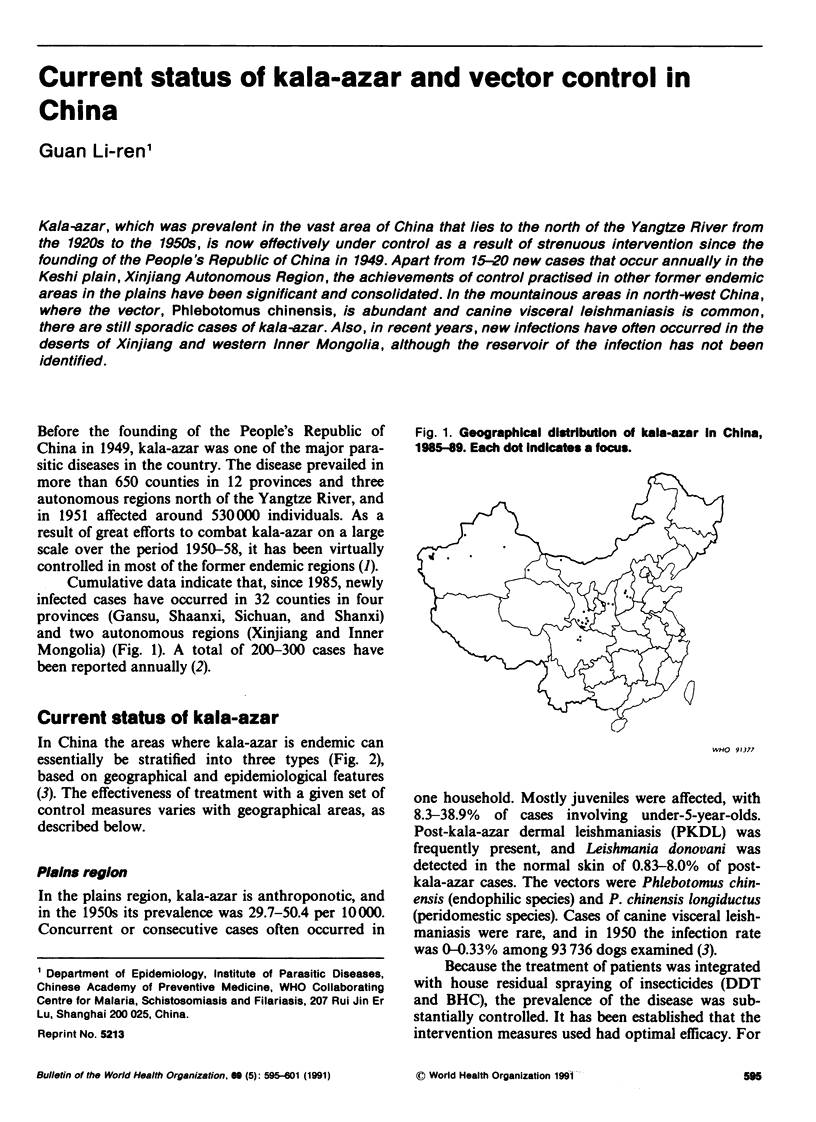
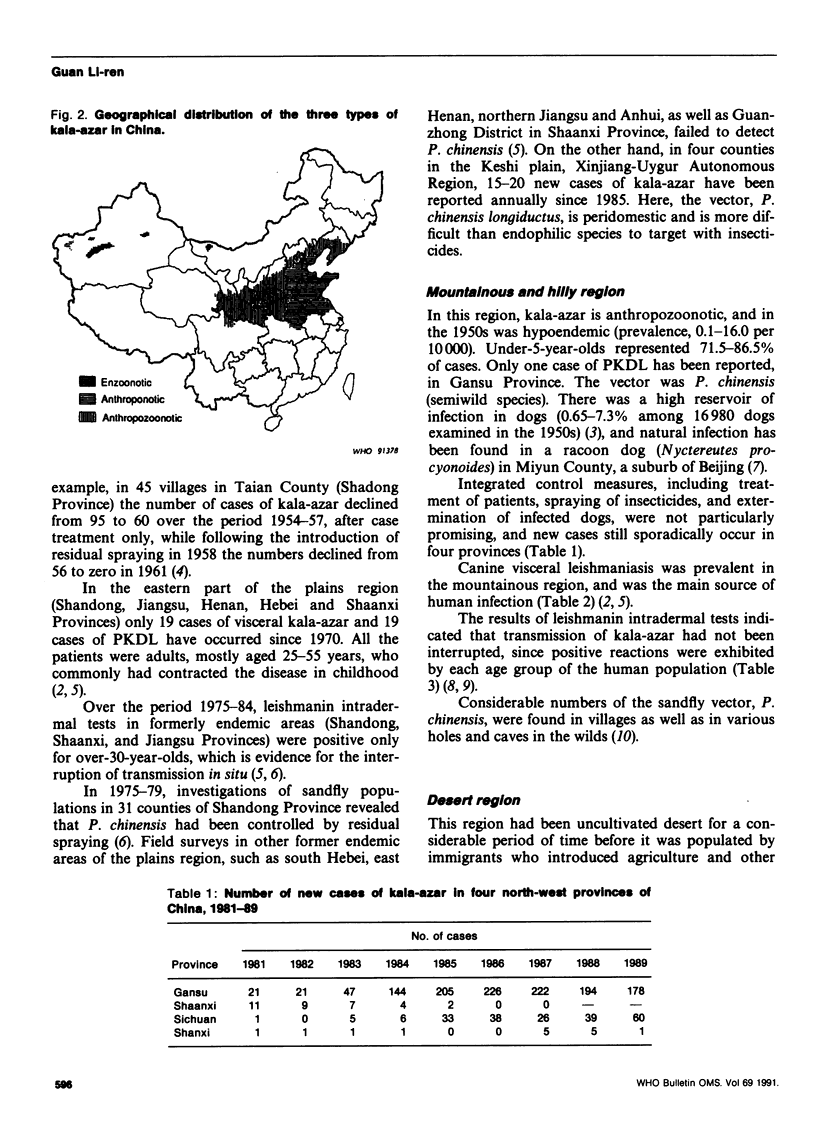
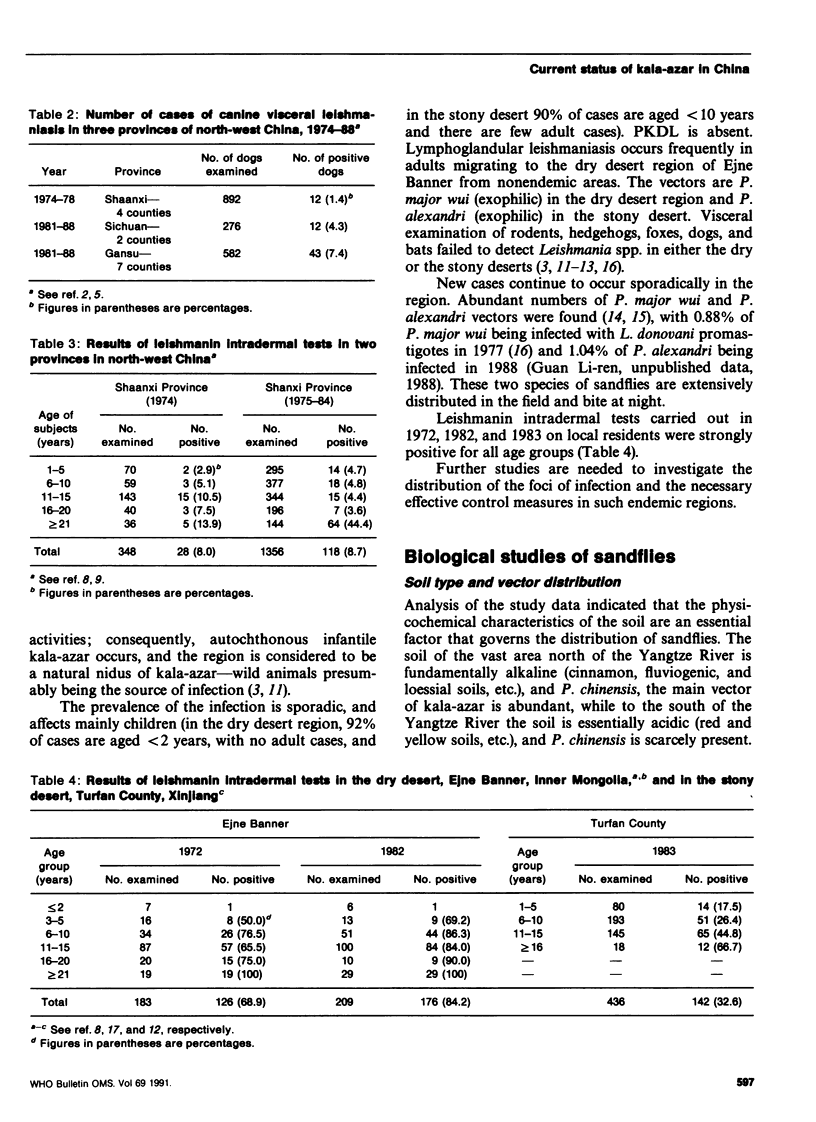
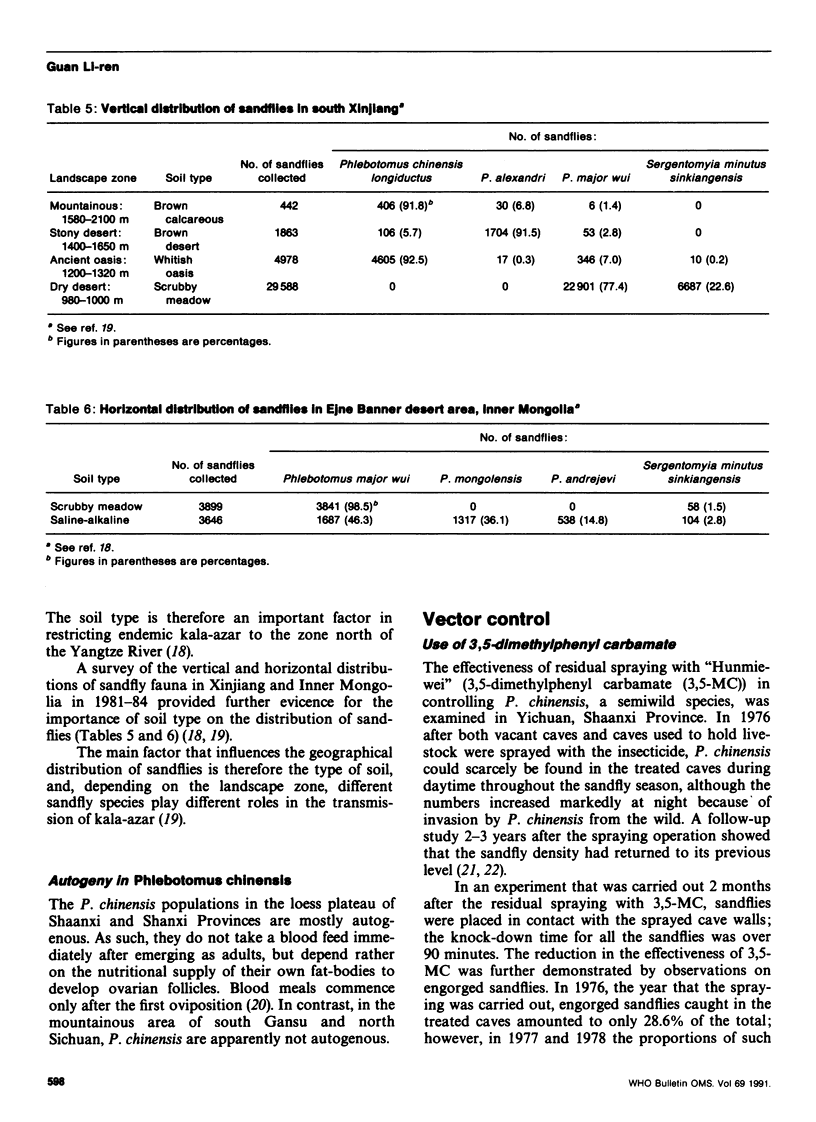
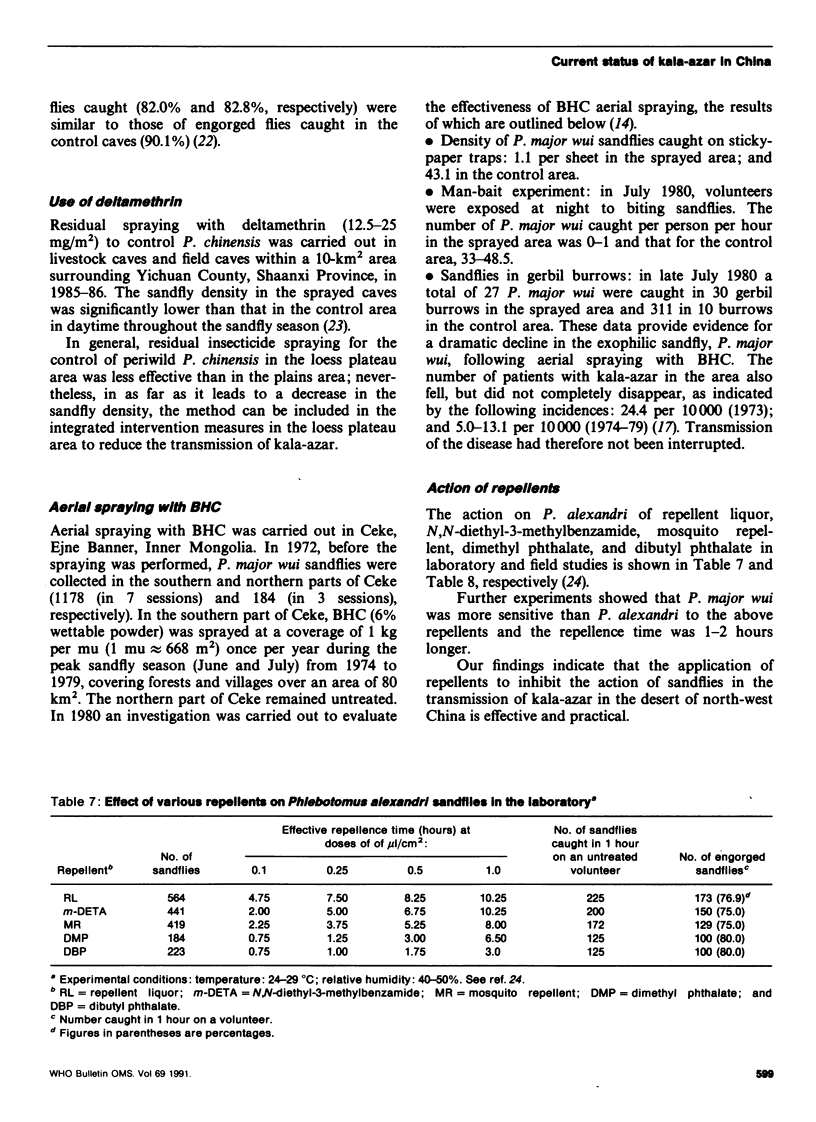
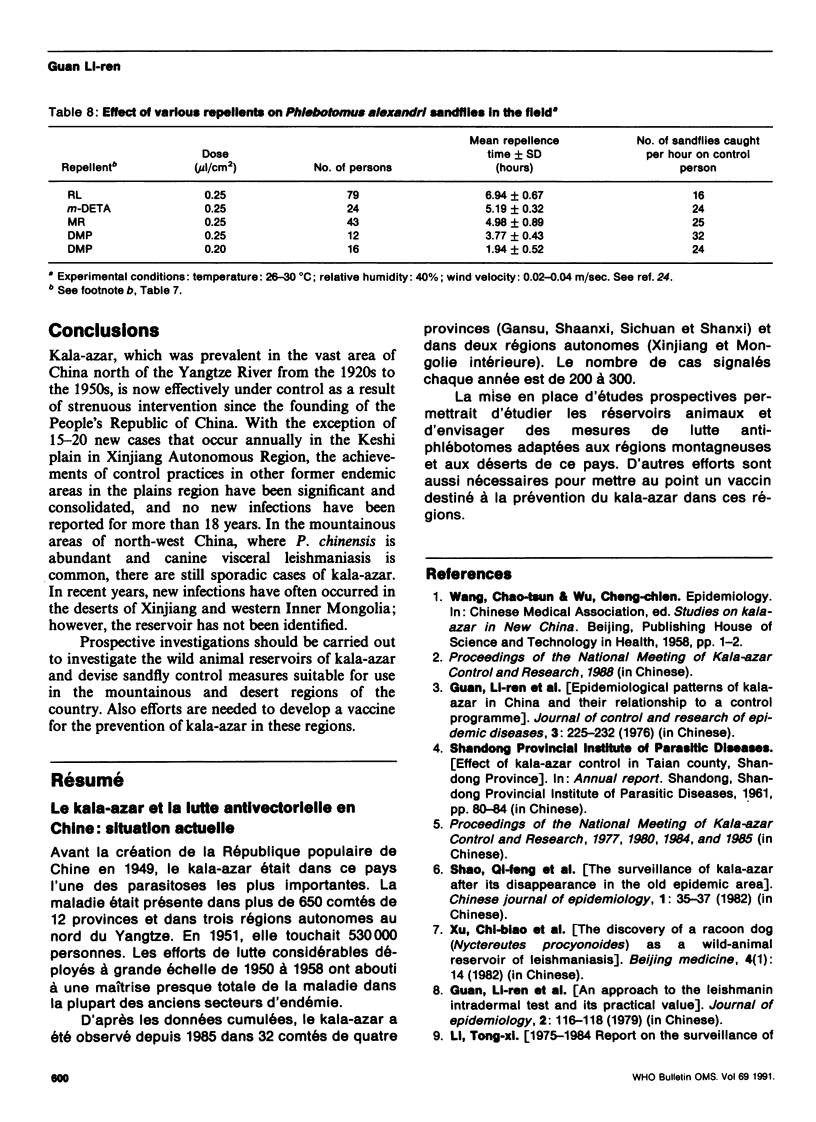

Selected References
These references are in PubMed. This may not be the complete list of references from this article.
- Guan L. R., Xu Y. X., Li B. S., Dong J. The role of Phlebotomus alexandri Sinton, 1928 in the transmission of kala-azar. Bull World Health Organ. 1986;64(1):107–112. [PMC free article] [PubMed] [Google Scholar]
- Guan L. R., Xu Y. X., Mao Y. D., Wang W. [The sandfly fauna and its role in transmission of kala azar in four landscape zones of the Aksu region, Xinjiang]. Ji Sheng Chong Xue Yu Ji Sheng Chong Bing Za Zhi. 1986;4(3):169–172. [PubMed] [Google Scholar]


